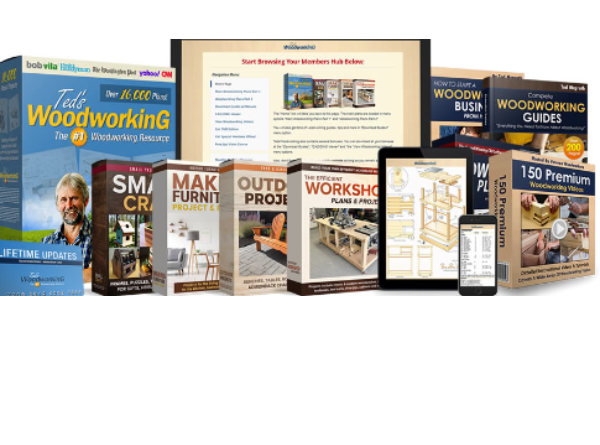
How To Do Woodwork Projects
Welcome! If you’re looking to learn how to do woodwork projects, you’re in the right place. In this article, you’ll find easy-to-follow tips and techniques to help you get started on your next woodworking endeavor. So grab your tools and let’s get crafting!
How To Do Woodwork Projects
Woodwork projects can be a fun and rewarding hobby, allowing you to create beautiful pieces with your own hands. Whether you’re a beginner or an experienced woodworker, there’s always something new to learn and ways to improve your skills. In this article, we will explore the basics of woodwork projects, from choosing the right materials to finishing touches to help you create stunning pieces.
Choosing the Right Materials
When starting a woodwork project, it’s crucial to select the right materials for the job. The type of wood you choose will depend on the project you’re working on and your skill level. Softwoods like pine and cedar are great for beginners, as they are easy to work with and less expensive. Hardwoods like oak and walnut are more durable and have a beautiful finish, but they can be more challenging to work with.
Types of Wood
There are various types of wood available for woodworking projects, each with its own characteristics. Here are some common types of wood used in woodworking:
- Pine: Softwood that is easy to work with and affordable.
- Oak: Hardwood with a beautiful finish but can be challenging to work with.
- Cedar: Softwood that is lightweight and has a natural resistance to insects and rot.
- Walnut: Hardwood with a rich, dark color and fine grain.
Selecting the Right Wood for Your Project
When choosing wood for your project, consider the following factors:
- Durability: Consider the durability of the wood for the intended use of the project.
- Appearance: Choose a wood that complements the design and style of your project.
- Workability: Select a wood that suits your skill level and the tools you have available.
To help you better understand the different types of wood and their characteristics, refer to the table below:
| Type of Wood | Characteristics |
|---|---|
| Pine | Easy to work with, affordable |
| Oak | Beautiful finish, challenging to work with |
| Cedar | Lightweight, natural resistance to insects and rot |
| Walnut | Rich, dark color, fine grain |
Essential Tools for Woodworking
Having the right tools is essential for any woodwork project, as they can make your work easier and more precise. While the tools you need will depend on the project you’re working on, there are some essential tools that every woodworker should have in their workshop.
Basic Hand Tools
- Hammer: Used for driving nails and adjusting joints.
- Screwdriver: For driving screws and adjusting hardware.
- Chisels: Used for shaping and smoothing wood.
- Handsaw: For cutting wood to size.
- Wood Plane: Used for smoothing rough surfaces.
Power Tools
- Circular Saw: Ideal for making straight cuts in wood.
- Drill: Used for drilling holes and driving screws.
- Router: Essential for creating decorative edges and profiles.
- Orbital Sander: For sanding wood surfaces for a smooth finish.
- Table Saw: Great for making precise cuts and ripping large pieces of wood.
Having these tools in your workshop will help you tackle a wide range of woodwork projects with ease.
Tips for Beginner Woodworkers
If you’re new to woodworking, there are some tips and tricks that can help you get started on the right foot. Learning the basics and practicing with simple projects will build your skills and confidence as a woodworker.
Start with Simple Projects
Begin with small and simple projects, such as a cutting board or a picture frame, to build your skills and confidence. These projects will help you familiarize yourself with the tools and techniques used in woodworking.
Practice Proper Safety
Always prioritize safety when working with wood and tools. Wear protective gear like safety goggles and gloves, and make sure your workspace is well-ventilated. Follow the manufacturer’s instructions for your tools and use them properly to avoid accidents.
Learn from Experienced Woodworkers
Join woodworking classes or online forums to connect with experienced woodworkers who can offer advice and tips. Watching tutorials and reading woodworking books can also help you learn new techniques and improve your skills.
Take Your Time
Woodworking is a craft that requires patience and attention to detail. Take your time with each step of the project, from measuring and cutting to sanding and finishing. Rushing can lead to mistakes and compromise the quality of your work.
Finishing Touches
The final step in any woodwork project is applying a finish to protect the wood and enhance its appearance. There are various types of finishes available, each with its own advantages and applications.
Types of Wood Finishes
- Stain: Enhances the natural color and grain of the wood.
- Varnish: Provides a protective layer that is durable and easy to clean.
- Oil: Penetrates the wood to protect and enhance its natural beauty.
- Polyurethane: Creates a hard, glossy finish that is resistant to heat and moisture.
Applying a Finish
Before applying a finish, prepare the wood by sanding it smooth and removing any dust. Use a brush or cloth to apply the finish evenly in the direction of the grain. Allow the finish to dry completely before sanding lightly and applying additional coats as needed.
Protecting and Maintaining Your Finished Piece
Once the finish has dried, your woodwork project is ready for use or display. To prolong the life of the finish, avoid placing hot or wet items directly on the surface. Regularly clean and polish the wood to maintain its beauty and protect it from damage.
Learn more ways to get more project Plan
Conclusion
Woodwork projects are a creative and rewarding hobby that allows you to express your creativity and craftsmanship. By choosing the right materials, using essential tools, and following best practices, you can create stunning pieces that will last a lifetime. Whether you’re a beginner or an experienced woodworker, there’s always something new to learn and ways to improve your skills. So grab your tools, pick up some wood, and start creating your next masterpiece.
Happy woodworking!
Affiliate Disclosure: if you click any link within my Article and Purchase, I will get Credit do not worry, this come directly from the company and does not effect you in anyway.
Bear in mind that this Article has been Generated using AI







